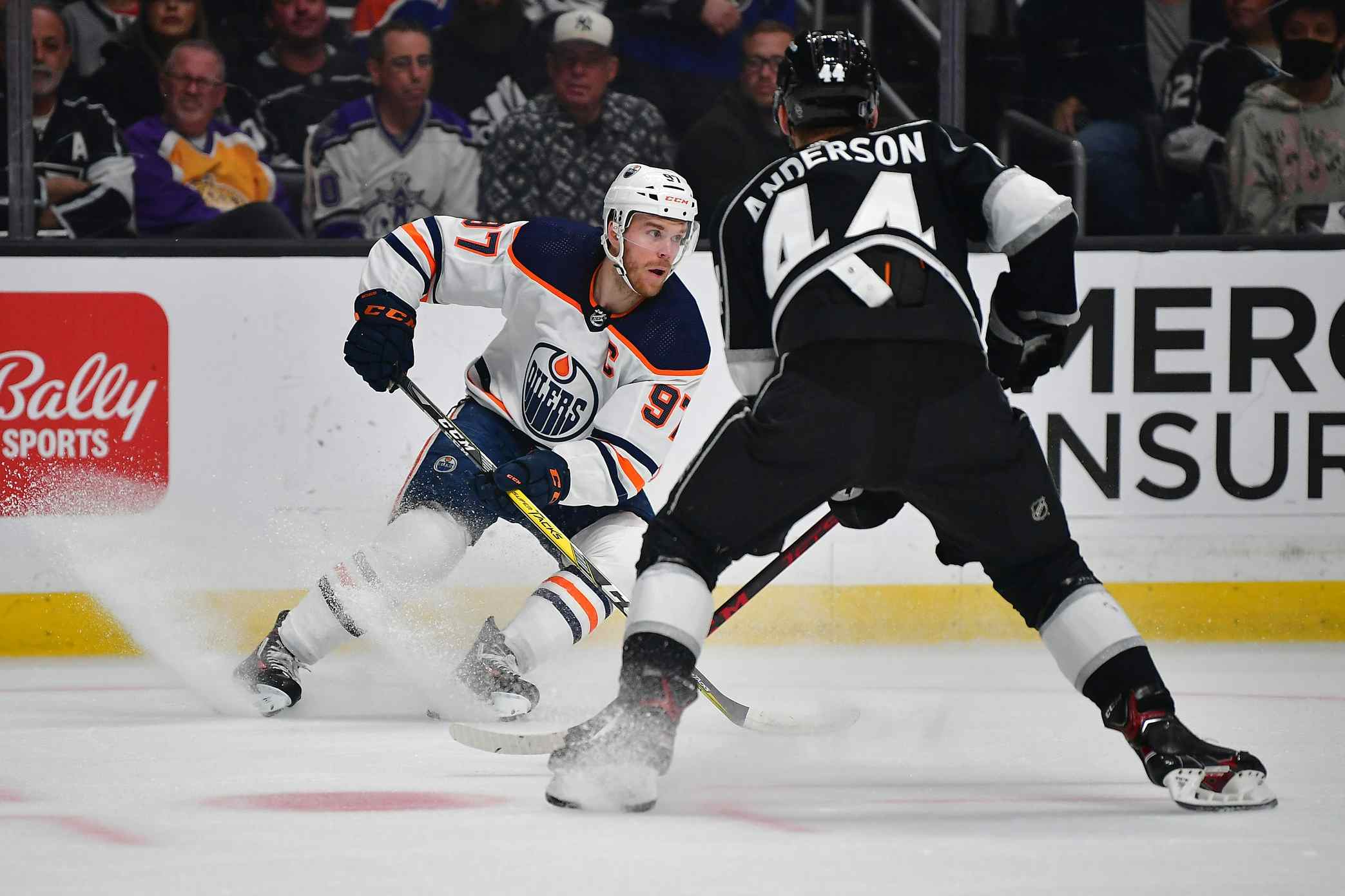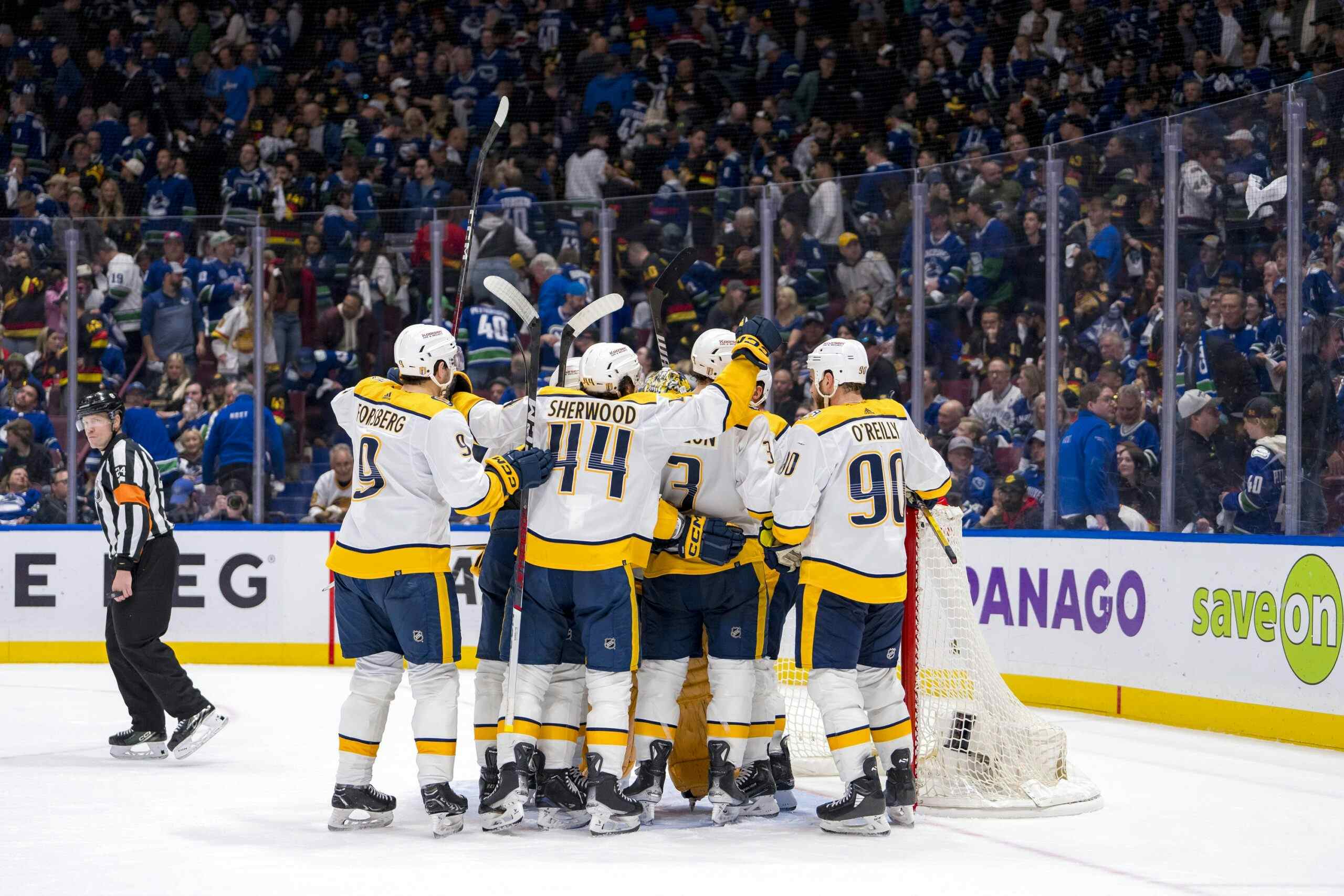Is Anton Lander a long-term fit for the Edmonton Oilers?

Anton Lander surprised a lot of people with an exceptional performance in the NHL in the second half of 2014-15, a performance which earned him a two-year contract extension and likely saved his major-league career.
It may not be enough to keep him with the Oilers, though, because he faces two significant obstacles. First, he needs to show that last year wasn’t a fluke, and second he needs to carve out a niche on a team that has three young skaters with impeccable draft pedigree vying for minutes at centre.
Sustain

Anton Lander has played for four different NHL coaches, and he’s had success under one. He was arguably rushed to the majors too early as a rookie pro under Tom Renney, playing bit minutes on a bad team and eventually getting sent to the minors. He had a cameo for Ralph Krueger at a time where the Oilers were dying for help up the middle; he couldn’t deliver it. And he played for Dallas Eakins, getting a real opportunity with decent players (most common linemate: David Perron) and on the power play (average TOI: 1:05) but failing to deliver.
He finally broke through under Todd Nelson, after the two spent literally years together in Oklahoma City. Nelson gave Lander unique opportunities that another coach likely would not have and Lander found a way to translate his formidable skills to the majors under a familiar boss. The question is whether he can continue to perform for not-Todd Nelson, in this case Todd McLellan.
His actual skill isn’t really at issue. Lander has his faults (size, at times acceleration), but at his best he does a lot of things right. He plays a smart game, not just defensively but when he’s on he’s a surprisingly creative playmaker in the offensive zone. He’s a character player both on the ice, where he plays a greasy and determined game, and off it where he was voted captain by his Barons’ teammates. He can skate and he can shoot, too. But for years, we didn’t see most of those qualities in the NHL, as he played an uber-cautious and ultimately ineffective style which only really went away last year.
He can’t afford to regress, and the trouble is that the potential is there. In a lot of ways Lander’s surprising offensive production in 2014-15 looks worrisome in the rearview mirror. At even-strength almost half of his points were second assists; he scored just two goals in 38 games. He added four goals and seven points on the power play, and while he’s shown ability there he’s going to be in some tough competition for time on the man advantage.
If Lander is pushed into more of a pure defensive role, it’s not inconceivable that we could see him regress to the kind of all-defence, all-the-time player he was the last few years. Obviously, that’s a worst case scenario and far from certain, but it’s going to be a challenge for Lander to hang on to the role he claimed last season and we won’t know for sure that he can do it until he does.
Niche

Edmonton’s centre depth chart at this moment in time looks something like this:
- Ryan Nugent-Hopkins. He’ll likely lead the position in even-strength minutes, play on the top power play and take a regular shift on the penalty kill.
- Connor McDavid. First unit power play time is almost a given, and he’s likely to end up as the Oilers’ number two pivot at even-strength, though on some nights he may well push Nugent-Hopkins.
- Leon Draisaitl. He may end up on the wing, and if he does play centre he’ll be taking on lower-end minutes. He’ll push for power play time and nobody should be shocked if he gets tried on the penalty kill, though regular duty is probably still a couple of years away.
- Mark Letestu. Letestu is a right-shooting version of a lot of the things Lander would like to be. In all likelihood he’ll end up playing regularly at even-strength, he’s a workhorse on the penalty kill and he has history (and some success) on the power play, where he contributes a right shot and faceoff wins.
Letestu is signed for three years and is an immediate threat to Lander. He fills much the same role (depth even-strength pivot, option on both special teams) and he was brought in by the new management and committed to long-term. He’s also a right shot on a power play that doesn’t have a lot of them and that alone will give him a bit of an edge.
Longer-term, the threat is Draisaitl. The young German may start on the wing but down the road will likely end up at centre, giving the Oilers (if all goes well) a formidable 1-2-3 punch. Draisaitl is an intelligent, well-rounded centre and at some point he’ll almost certainly be taking on some defensive duties, including killing penalties.
Lander has the advantage of incumbency on both Letestu and Draisaitl, but with a new general manager and a new coach that advantage doesn’t carry nearly as much weight as it normally does and if he slips out of the gate it could evaporate entirely. It’s worth remembering that Lander didn’t show particularly well in camp a year ago when a lot of things (he needed to clear waivers to be sent down, the centre depth chart was a trainwreck) were working in his favour and if that happens again it’s going to be much easier for McLellan to hand his minutes over to the other options at his disposal.
Lander, Long-term

There are, as we’ve just considered, a lot of elements standing between Lander and long-term employment with the Edmonton Oilers. I like what the player can do a lot, but realistically it shouldn’t surprise anyone if he ends up getting pushed out at some point.
But that’s hardly a fait accompli. Chicago for years employed Marcus Kruger and Ben Smith together on a fourth line which wasn’t really a fourth line, using the two centres as complementary faceoff men (one shot right, the other left). One route to long-term employment in a primarily defensive role would be for Lander and Letestu to form a similar partnership.
The other would be to make himself indispensable. If Lander shows strongly in camp, has success on both special teams while at the same time adding value at even-strength – in short if he holds down the job he has and continues to deliver at the rate he did last season – it’s going to be tough to move him out. Long-term Draisaitl may be a centre but he’s still just 19 years old and a couple of years at left wing will become an increasingly attractive option if there’s obviously no need for immediate help down the middle.
Centre promises to be a position worth watching for years to come, and that at least is an encouraging development for a team which has been barren at the position for many years now.
RECENTLY BY JONATHAN WILLIS
Recent articles from Jonathan Willis





